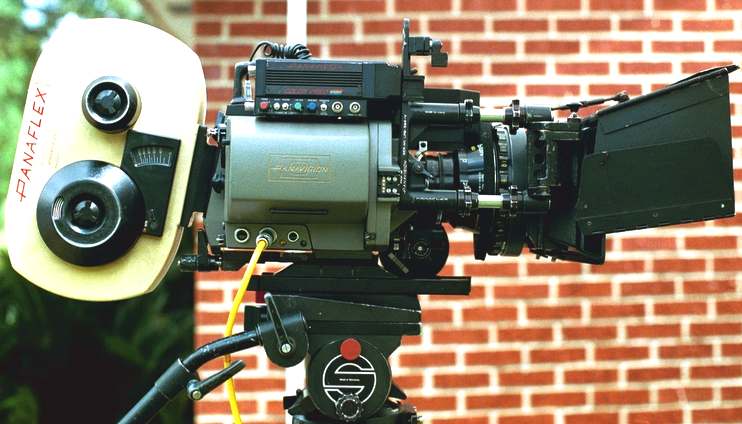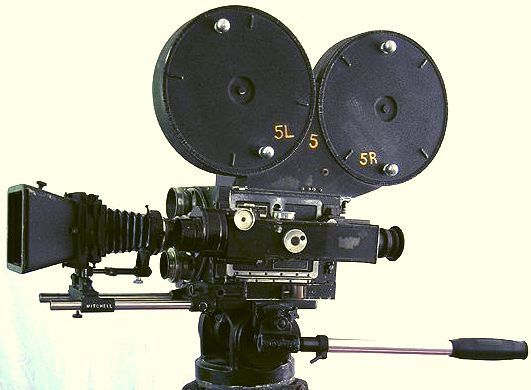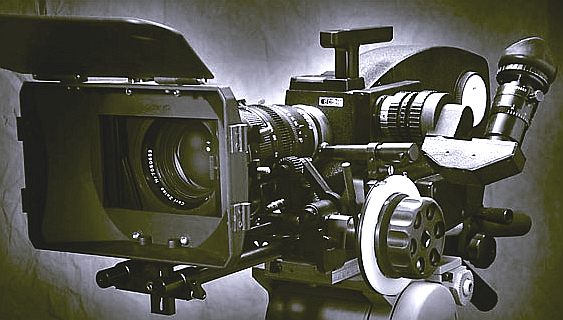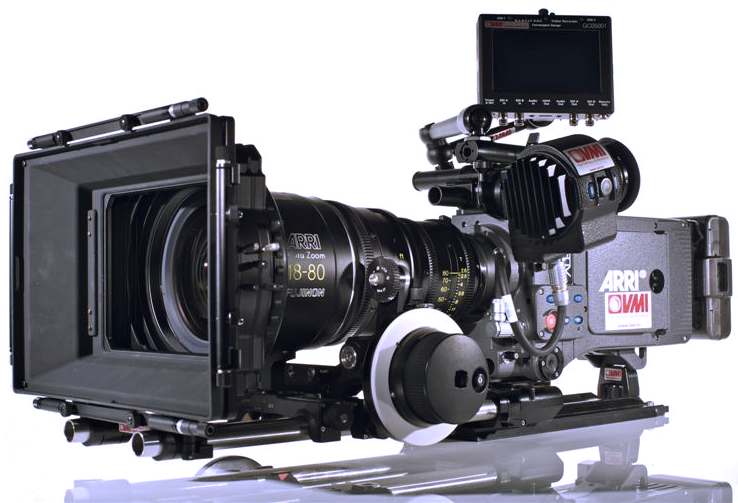|
|
H:
Equipment
|
|
.
|
.
|
.
|
.
|
.
|
|
H1
|
35mm
camera
|
2,600.00
|
11
wks
|
370,000.00
|
|
H2
|
Accessories
|
560.00
|
11
wks
|
190,000.00
|
|
H3
|
Lenses
|
750.00
|
11
wks
|
90,900.00
|
|
H4
|
Filters
|
320.00
|
11
wks
|
186,000.00
|
|
H5
|
Dolly
/ crane etc.
|
900.00
|
11
wks
|
42,300.00
|
|
H6
|
Large
crane
|
1,380.00
|
11
wks
|
14,100.00
|
|
H7
|
Grip
gear
|
50.00
|
11
wks
|
370,000.00
|
|
H8
|
Lights
|
5,300.00
|
11
wks
|
190,000.00
|
|
H9
|
Consumables
|
340.00
|
11
wks
|
90,900.00
|
|
H10
|
Lighting
truck
|
250.00
|
11
wks
|
186,000.00
|
|
H11
|
Generator
(incl fuel)
|
820.00
|
11
wks
|
42,300.00
|
|
H12
|
Steadicam
/ Op
|
800.00
|
11
wks
|
14,100.00
|
|
H13
|
Nagra
/ mics
|
800.00
|
11
wks
|
93,000.00
|
|
H14
|
Motorolas
|
400.00
|
11
wks
|
93,000.00
|
|
H15
|
Zip
ups
|
80.00
|
11
wks
|
93,000.00
|
|
H16
|
2nd
camera
|
1,800.00
|
3
|
5,400.00
|
|
.
|
|
|
|
|
|
,.
|
.
|
.
|
.
|
.
|
|
Subtotal
H.
|
174,250.00
|
|
.
|
.
|
.
|
.
|
.
|
VISION
- As a film development company, we aim to develop high quality productions to
entertain a deserving audience, based on the stories of Jameson Hunter -
in turn inspired by generations of Bond, Indiana
Jones, the Jason Bourne
series and Lara
Croft, with a hefty topping of Ridley
Scott.

ABOUT
FILM CAMERAS The
modern movie camera is an optical photographic camera which takes a rapid sequence of photographs on strips of film. The video camera has largely replaced it for private use, but for professional purposes, movie cameras are used and produced today, especially for the production of full-feature movies. In contrast to a still camera, which captures a single snapshot at a time, the movie camera takes a series of images; "frame". This is accomplished through an intermittent mechanism. The frames are later played back in a movie projector at a specific speed, called the frame rate (number of frames per second). While viewing, a person's eyes and brain merge the separate pictures together to create the illusion of motion.
Most of the optical and mechanical elements of a movie camera are present in the movie projector. The requirements for film tensioning, take-up, intermittent motion, loops, and rack positioning are almost identical. The camera will not have an illumination source and will maintain its film stock in a light-tight enclosure. A camera will also have exposure control via an iris aperture located on the lens. Also, there is a rotating, sometimes mirrored shutter behind the lens, which alternately passes the light from the lens to the film, or reflects it into the viewfinder. The
right-hand side of the camera is often referred to by camera assistants as "the dumb side" because it usually lacks indicators or readouts and access to the film threading, as well as lens markings on many lens models. More recent equipment often has done much to minimize these shortcomings, although access to the film movement block by both sides is precluded by basic motor and electronic design necessities.
The standardized frame rate for commercial sound film is 24 frames per second. The standard commercial (i.e., movie-theater film) width is 35 millimeters, while many other film formats exist. The standard aspect ratios are 1.66, 1.85, and 2.39 (anamorphic). NTSC video (common in North
America and
Japan) plays at 29.97 frame/s; PAL (common in most other countries) plays at 25 frame/s. These two television and video systems also have different resolutions and color encodings. Many of the technical difficulties involving film and video concern translation between the different formats. Video aspect ratios are 4:3 (1.33) for full screen and 16:9 (1.78) for widescreen.
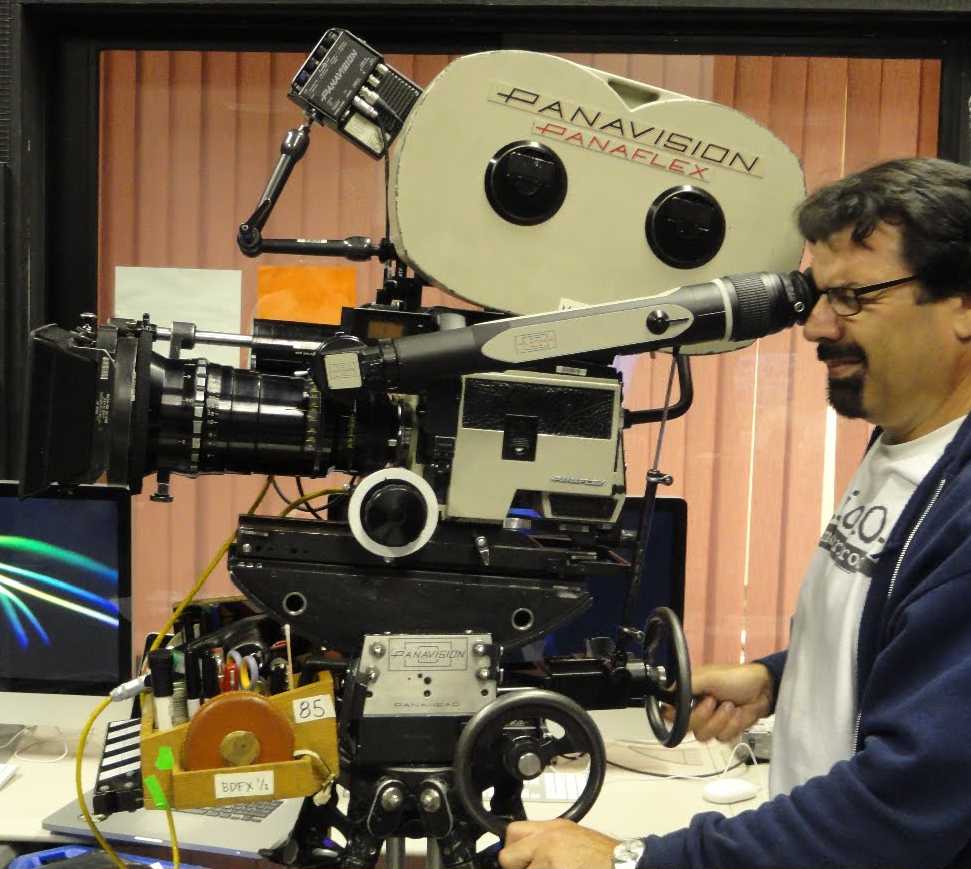
Multiple cameras
Multiple-camera setups may used and synchronized. The films are projected simultaneously, either on a single three-image screen (Cinerama) or upon multiple screens forming a complete circle, with gaps between screens through which the projectors illuminate an opposite screen. (See Circle-Vision 360°) convex and concave mirrors are used in cameras as well as mirrors.
Sound synchronization
One of continuing problems in film is synchronizing a sound recording with the film. Most film cameras do not record sound internally; instead, the sound is captured separately by a precision audio device (see double-system recording). The exceptions to this are the single-system news film cameras, which had either an optical—or later—magnetic recording head inside the camera. For optical recording, the film only had a single perforation and the area where the other set of perforations would have been was exposed to a controlled bright light that would burn a waveform image that would later regulate the passage of light and playback the sound. For
magnetic recording, that same area of the single perf 16 mm film that was prestriped with a magnetic stripe. A smaller balance stripe existed between the perforations and the edge to compensate the thickness of the recording stripe to keep the film wound evenly.
Double-system cameras are generally categorized as either "sync" or "non-sync." Sync cameras use crystal-controlled motors that ensure that film is advanced through the camera at a precise speed. In addition, they're designed to be quiet enough to not hamper sound recording of the scene being shot. Non-sync or "MOS" cameras do not offer these features; any attempt to match location sound to these cameras' footage will eventually result in "sync drift", and the noise they emit typically renders location sound recording useless.
To synchronize double-system footage, the clapper board which typically starts a take is used as a reference point for the editor to match the picture to the sound (provided the scene and take are also called out so that the editor knows which picture take goes with any given sound take). It also permits scene and take numbers and other essential information to be seen on the film itself. Aaton cameras have a system called AatonCode that can "jam sync" with a timecode-based audio recorder and prints a digital timecode directly on the edge of the film itself. However, the most commonly used system at the moment is unique identifier numbers exposed on the edge of the film by the film stock manufacturer (KeyKode is the name for Kodak's system). These are then logged (usually by a computer editing system, but sometimes by hand) and recorded along with audio timecode during editing. In the case of no better alternative, a handclap can work if done clearly and properly, but often a quick tap on the microphone (provided it is in frame for this gesture) is preferred.
One of the most common uses of non-sync cameras are the spring-wound cameras used in hazardous special effects, known as "crash cams".
Scenes shot with these have to be kept short, or resynchronized manually with the sound. MOS cameras are also often used for second unit work or anything involving slow or fast-motion filming.
History
One of the first patented motion-picture film cameras was designed by Louis Le Prince in 1888. It still exists with the National Media Museum, England. Le Prince employed paper bands and celluloid film from John Carbutt and or Blair & Eastman in 1¾ inch width. The first motion picture camera patented in the United States was created by Thomas Alva Edison.
Edison filed a patent on August 24, 1891 for a Kinetographic Camera.
On June 21, 1889, William Friese-Greene was issued patent no. 10131 for his 'chronophotographic' camera. It was apparently capable of taking up to ten photographs per second using perforated celluloid film. A report on the camera was published in the British Photographic News on February 28, 1890. On 18 March, Friese-Greene sent a clipping of the story. Friese-Greene gave a public demonstration in 1890 but the low frame rate combined with the device's apparent unreliability failed to make an impression.
Georges Demenÿ, employee with Etienne Jules Marey, constructed the Beater Movement in 1893. The film width is 60 mm.
In 1894 Polish inventor Kazimierz Prószyński constructed Pleograph projector and camera in one, and in 1898 most advanced biopleograf.
Max Skladanowsky conceived his own make of camera in 1894-95, but more interesting is his “Bioscop” projector, the first duplex construction in practice. Green, part designer for Prestwich, also designed a duplex projecting machine. This 1896 wide-film projector can be seen at the South Kensington Science Museum.
The Lumière Domitor camera was originated by Charles Moisson, chief mechanic of the Lumière works at Lyon in 1894. They shot on paper film of 35 millimeter width. In 1895 the Lumière could buy celluloïd film from New-York’s Celluloid Manufacturing Co. This they covered with their own Etiquette-bleue emulsion, had it cut into strips and perforated. It is not known which recipe they used for positives.
Then an ever increasing number of cine cameras came up. The makes and brands would be: Birt Acres (1894–95), the Latham Eidoloscope by Lauste (1895), the Marvin & Casler Bioscope by Dickson (1895), Pathé frères (1896) with ratchet claws, Prestwich (1896), Newman & Guardia (1896), de Bedts, Gaumont-Démény (1896), Schneider, Schimpf, Akeley, Debrie, Bell & Howell, Leonard-Mitchell, Ertel, Ernemann, Eclair, Stachow, Universal, Institute, Wall, Lytax, and many others.
The Ciné Kodak Special II - 16mm movie camera (1948)
The first all-metal cine camera is the Bell & Howell Standard of 1911-12. One of the most complicated models is the Mitchell-Technicolor Beam Splitting Three-Strip Camera of 1932. With it, three colour separation originals are obtained behind a purple, a green, and a red light filter, the latter being part of one of the three different raw materials in use.
In 1923 Eastman Kodak introduced a 16mm film stock, principally as a lower cost alternative to 35mm and several camera makers launched models to take advantage of the new market of amateur movie-makers. Thought initially to be of inferior quality to 35mm, 16mm cameras continue to be manufactured today by the likes of Bolex, Arri and Aaton many in the Super 16mm and Ultra 16mm formats.
The most popular 35 mm cameras in use today are Arri/Arriflex, Moviecam (now owned by the Arri Group), and Panavision models. For very high speed filming, PhotoSonics are used.
VISION
- The rights to this story now vest in the Cleaner Ocean Foundation. The
Foundation are looking to produce scripts and graphic novels based on the stories of Jameson Hunter -
in turn inspired by generations of cult classics such as: Them, Phase5,
Dr Who and Empire of the Ants. The same special effects artwork, doubles
up for Jimmy
Watson's Magic Dinobot.
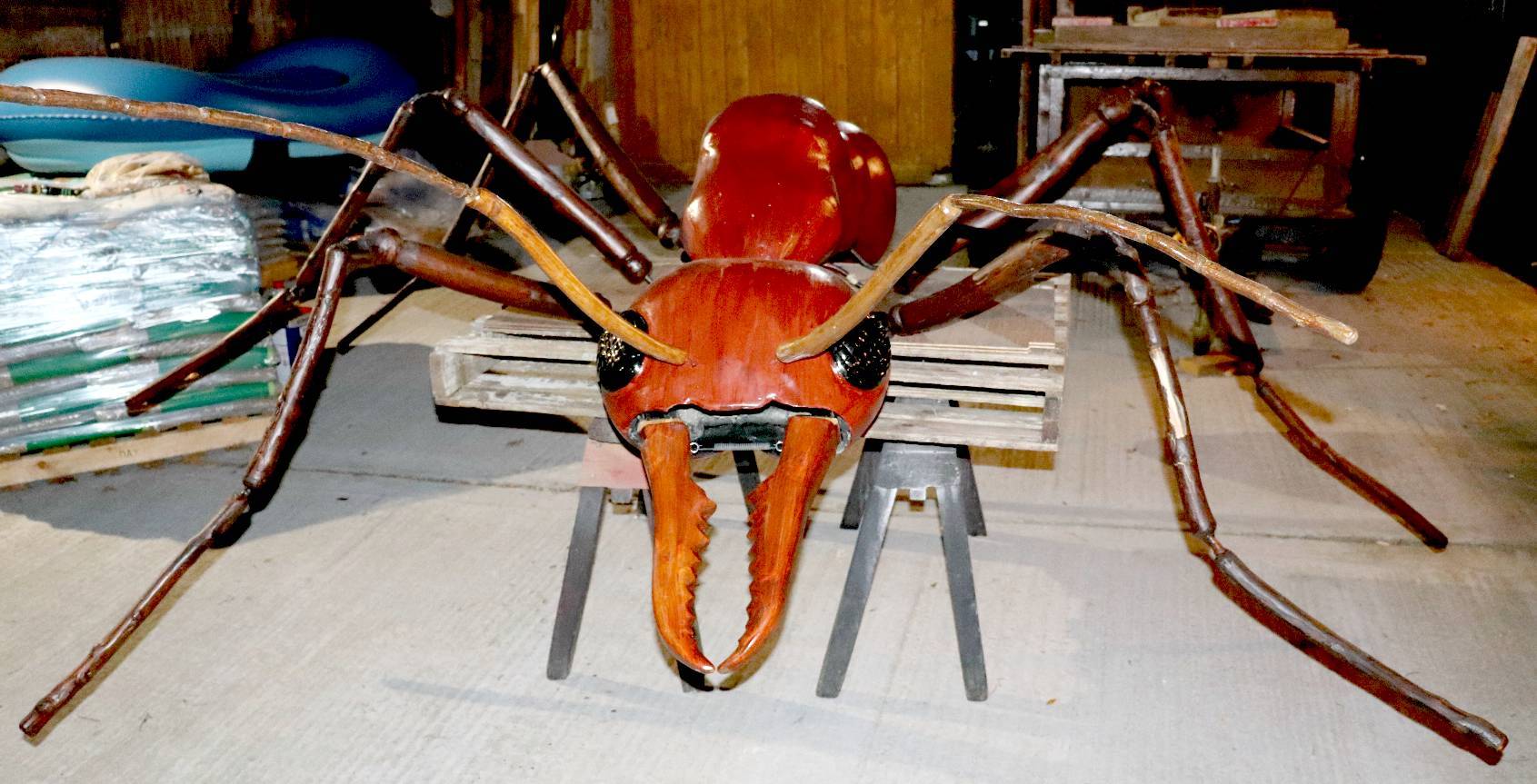

|

